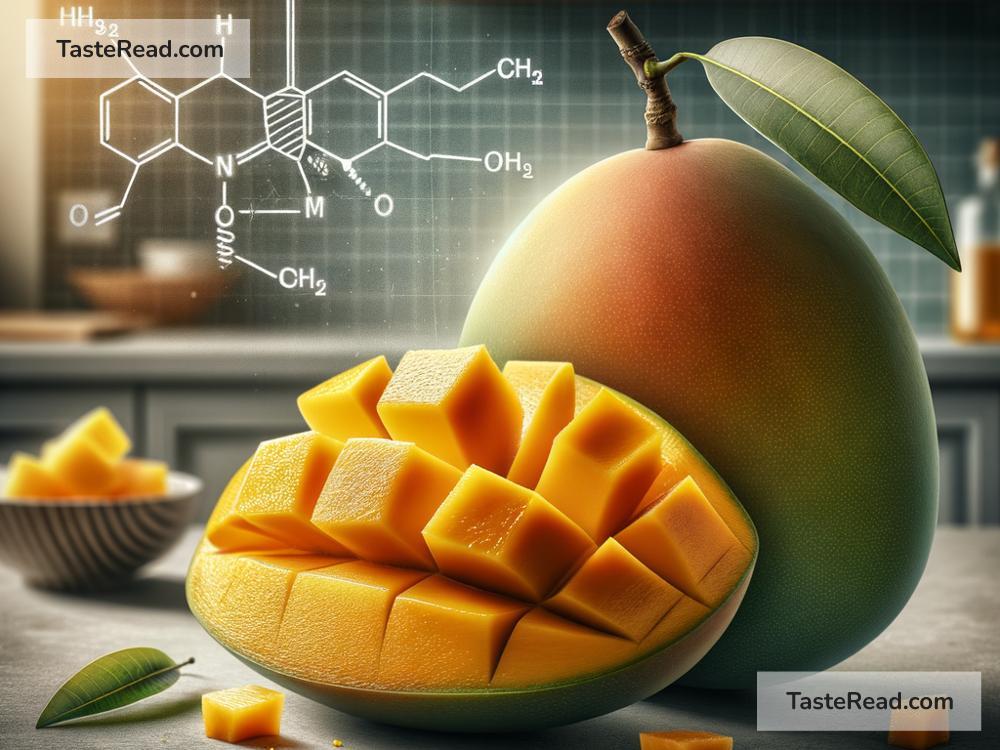The Science Behind Mangoes and Their Sweetness
Mangoes, often called the “King of Fruits,” are beloved around the world for their juicy, rich, and sweet flavor. Whether you enjoy them fresh, in desserts, or blended into smoothies, mangoes are a treat for the taste buds. But have you ever wondered what makes mangoes so sweet? It’s not just magic; it’s science! Let’s dive into the fascinating world of mangoes and uncover how they get their sweetness.
What Makes Mangoes Sweet?
The sweetness of a mango comes from the sugars in the fruit. As a mango matures and ripens, it produces natural sugars like glucose, fructose, and sucrose. These sugars are responsible for the fruit’s sweet taste. When you bite into a perfectly ripe mango, the high level of sugar makes your mouth feel like you’re eating candy—nature’s candy!
But sweetness doesn’t just happen overnight. It develops as the fruit grows, ripens, and goes through chemical changes inside. So let’s explore what happens during each stage of this process.
How Mangoes Ripen
Ripening is the magical stage when a mango transforms from a hard, green fruit to a soft, sweet one. Behind the scenes, the fruit undergoes chemical changes that affect its taste, color, texture, and aroma.
One of the key players in mango ripening is a natural plant hormone called ethylene. Ethylene works like a ripening signal for the fruit. When a mango starts producing ethylene, it triggers enzymes and chemical reactions inside the fruit. Let’s take a closer look at the changes:
1. Sugar Formation
As mangoes ripen, enzymes called amylases break down starches (which are long chains of carbohydrates) in the fruit into simpler sugars like glucose, fructose, and sucrose. These sugars are sweet, and their concentration increases as the fruit ripens.
When the mango is still green and unripe, it contains more starch than sugar. This is why unripe mangoes taste sour or bland. But thanks to amylases, the starch gets converted into sugar, making the mango taste sweeter and more delicious over time.
2. Reduction of Acidity
Unripe mangoes often contain organic acids, such as citric acid, which give them a sour taste. As the fruit ripens, these acids break down or become less concentrated, allowing the sweetness of the sugars to shine through.
3. Color Change
The vibrant yellow or orange color of a ripe mango isn’t just for show—it’s also part of the ripening process. Chlorophyll, the green pigment in unripe mangoes, begins to break down as the fruit ripens. This makes room for other pigments like carotenoids, which give mangoes their signature bright color. While color doesn’t affect the sweetness directly, it’s a visual indicator that the mango has ripened and is likely to be sweet.
Why Some Mangoes Are Sweeter Than Others
You may have noticed that not all mangoes taste equally sweet. There are several reasons why:
1. Different Varieties
Mangoes come in hundreds of varieties, and each type has a unique flavor profile. For example, Alphonso mangoes are well-known for their intense sweetness, while varieties like Tommy Atkins are milder in flavor. The amount of sugar in each mango varies depending on its type.
2. Growing Conditions
Where and how a mango is grown also affects its sweetness. Mangoes thrive in warm, tropical climates with plenty of sunlight. Sunlight helps the fruit produce more sugar during photosynthesis, making it sweeter. Mangoes grown in less sunny regions may have lower sugar levels.
3. Ripeness
Timing is crucial! If you eat a mango before it’s fully ripe, it may taste tart or sour because it hasn’t had enough time to develop its sugars. A ripe mango, on the other hand, will have the perfect balance of sweetness and flavor.
The Benefits of Sweet Mangoes
Not only are mangoes delicious, but they’re also packed with nutrients. A sweet ripe mango contains vitamins like Vitamin C and Vitamin A, along with fiber and antioxidants. These nutrients are good for your immune system, skin, and digestion. The natural sugars in mangoes provide energy, making them a healthy alternative to processed sweets.
Plus, mangoes have enzymes like mangiferin and bromelain, which help break down proteins and make digestion smoother. So while you savor the sweetness of mangoes, your body is also benefiting from their healthy properties!
Fun Mango Facts
- India is the largest producer of mangoes in the world.
- Mangoes have been cultivated for over 4,000 years.
- A ripe mango emits a sweet, fruity aroma because of volatile compounds like terpenes and esters. The smell is as much a part of the mango-eating experience as the taste!
Conclusion
The sweetness of a mango is the result of natural sugars, enzymes, and chemical changes during ripening. Every time you enjoy the delicious flavor of a mango, you’re tasting the science that went into creating that perfect fruit! Whether you prefer Alphonso, Ataulfo, or Kent mangoes, one thing is for sure—mangoes are the stars of the fruit world.
So the next time you bite into a juicy mango, take a moment to appreciate not only its taste but also the fascinating science behind its sweetness. Mother Nature truly knows how to make the perfect dessert!


